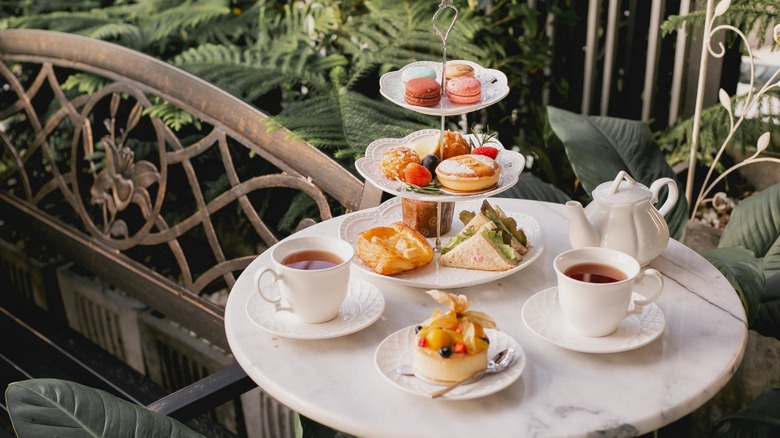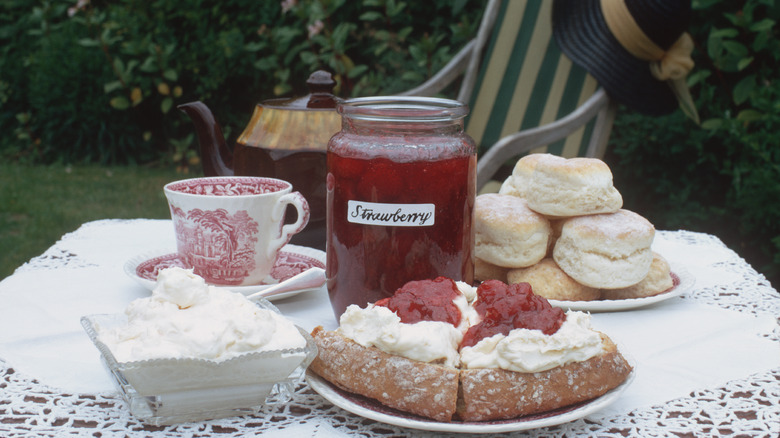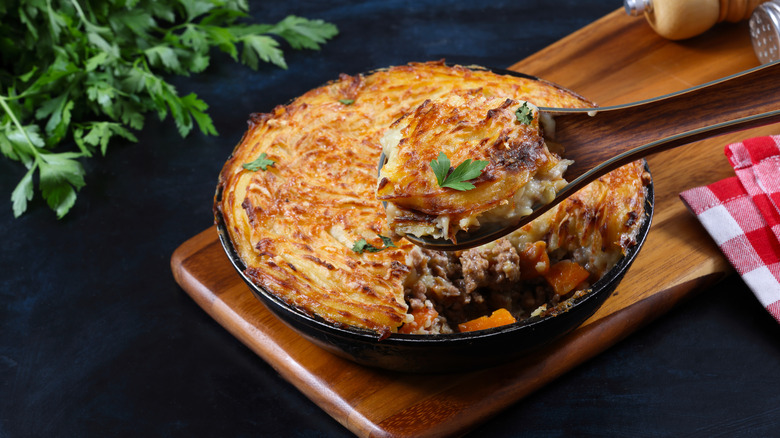What Makes Afternoon Tea Different From High Tea?
If you're traveling in the United Kingdom, Europe, or even spending time in some upscale hotels across America, it's possible you've been presented with an option of high tea. Or is it afternoon tea ... or low tea? Though both are firmly engrained English traditions spanning at least two centuries, Tea Time Magazine explains that high tea and afternoon (or low) tea most definitely are not the same thing. Just ask any Brit — in fact, please do ask before embarrassing yourself any more than necessary. (Hint: high tea is not the posh one, regardless of how it sounds.)
To understand why two seemingly similar tea traditions are treated as separate and distinct, it's important to know how each tradition began and its purpose both then and now. The type of food served in afternoon tea and high tea differs as well, for its own reasons.
Here's a quick look at the socially motivated afternoon tea and its heartier evening counterpart, high tea.
Afternoon tea for socializing or relaxing
NPR's The Salt explains that afternoon tea generally takes place in mid-afternoon between 3 and 4 p.m. It's also referred to as low tea, but not because it's considered "lowly" — in fact, it's quite the opposite. Low tea can be elegant or casual, but in modern times, it's almost always an indulgence rather than a necessity. The low tea moniker comes from it traditionally being served on low coffee or side tables rather than on higher dinner tables for proper meals, explains Tea Time Magazine.
One origin story of afternoon tea, shared in the book "A Social History of Tea," credits Duchess Anna Maria Russell with popularizing the tradition of serving afternoon tea to socialites lounging in low-slung armchairs. This low-tea social affair proliferated in the 1840s, intending to tide the ladies over from a typical light lunch to the more formal 7 to 8 p.m. dinner (but the real draw was likely the chance to catch up on daily goings-on in town or abroad).
Since it was never then, nor is it now, considered a proper meal, afternoon tea is generally light in nature. Whether being taken casually at home or splurging with friends at a fancy tearoom, some expected traditional foods are finger sandwiches (no crust, please), individual tea cakes, custards, biscuits, and scones with clotted cream and jam. It goes without saying that hot tea is a centerpiece of the experience, preferably Earl Grey, chamomile, or an herbal options, per the BBC.
High tea for hearty appetites
Once the idea of afternoon tea took root in British society, it inevitably took a different turn for workers without leisurely mid-afternoon breaks, according to The Salt. Returning home after a long day's work in the 1800s meant pretty much the same as it does today: it's time to eat. A cup of tea revitalized those coming home to an evening of family and chores, accompanied by things a bit heartier than tea cakes and cucumber sarnies.
A typical high tea, named for high tables with high-backed chairs suitable for eating a substantial spread, per Afternoon Tea, consisted of meats, fish, breads, and hot dishes such as shepherd's pie or stead-and-kidney pie. Then, as now, Tea Time Magazine shares the meal was often ended with desserts such as sticky pudding or treacle sponge cake.
So there you have it: low tea is light nibbles (and if you're lucky a little gossip) among friends, while high tea is essentially supper, complete with more filling dishes and desserts. Now that you know the difference between the two you'll know what to expect next time you are invited to tea.


